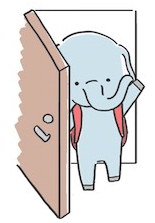ローマ字で日本語の発音を覚えると Konnichiha を「こにちわ」と呼んでしまって「こんにちは」にはならないような問題が出てきます。このように、ローマ字表記では正確な発音を学ぶのが難しい場合があります。特に、日本語にはローマ字で表現しきれない音やイントネーションがあります。
例えば、「つ」を「tsu」と書いても、日本語の「つ」の音を正確に表現するのは難しいです。また、「らりるれろ」の音も、英語の「r」や「l」の音とは異なるため、ローマ字では正確に発音を伝えられません。
さらに、長音(「おかあさん」や「とうきょう」など)や促音(「きっぷ」や「がっこう」など)もローマ字ではわかりにくいです。例えば、「おかあさん」を「okaasan」と書いた場合、英語話者は「おかさん」と誤って発音することがあります。また、「きっぷ」を「kippu」と書くと、「きぷ」と誤解されることがあります。
他にも、日本語の音にはアクセントがありますが、ローマ字ではこのアクセントを表現することが難しいです。例えば、「はし(橋)」と「はし(箸)」は同じ「hashi」というローマ字表記ですが、実際の発音は異なります。このように、ローマ字では日本語の微妙な発音の違いを学ぶことが困難です。
そのため、日本語を学ぶ際には、ひらがなやカタカナを使って発音を覚えることが重要です。これらの文字を使えば、日本語の音を正確に表現できるため、発音のミスを減らすことができます。また、ひらがなやカタカナを覚えることで、日本語のリスニングやスピーキングのスキルも向上します。
具体的な例として、以下のような単語やフレーズがあります:
* こんにちは (Konnichiwa) -> こにちわと間違いやすい
* おかあさん (Okaasan) -> おかさんと間違いやすい
* きっぷ (Kippu) -> きぷと間違いやすい
* はし(橋)(Hashi) と はし(箸)(Hashi) -> 同じ表記でも発音が異なる
これらの例を見てもわかるように、日本語の発音を正確に学ぶためには、ひらがなやカタカナを使用することが最も効果的です。
Use Hiragana or Katakana to Learn Japanese Pronunciation
Learning Japanese pronunciation via romaji can lead to problems such as pronouncing Konnichiwa as “ko-nichi-wa” instead of “kon-nichi-wa.” It can be difficult to learn accurate pronunciation based on romaji notation. This is because Japanese has sounds and intonations that cannot be fully expressed with romaji.
For example, it is hard to express the proper pronunciation of “つ” even with the use of “tsu.” Also, the “r” in “ra-ri-ru-re-ro" is pronounced differently from the “r” and “l” sounds in English, so romaji cannot accurately convey the correct pronunciation.
Furthermore, long vowels (e.g. “okaasan” and “tokyo”) and double consonants (e.g. “kippu” and “gakko”) are also difficult to understand in romaji. For example, English speakers may mispronounce “okaasan” as “oka-san.” Similarly, “kippu” may be pronounced as "ki-pu.
Moreover, Japanese sounds have accents, but these are difficult to express using romaji. For example, bridge and chopsticks are written in the same romaji, “hashi,” but the actual pronunciation is different. Thus, it is difficult to learn the subtle differences in Japanese pronunciation using romaji.
Therefore, when learning Japanese, it is important to use hiragana and katakana for pronunciation. Using these characters allows you to accurately represent the sounds of the Japanese language, thus reducing the number of pronunciation errors. Learning hiragana and katakana will also improve your Japanese listening and speaking skills.
Specific examples include the following words and phrases:
* Hello (Konnichiwa) -> mistaken as “ko-nichi-wa”
* Mom (Okaasan) -> mistaken as “oka-san”
* Ticket (Kippu) -> mistaken as “ki-pu”
* Bridge and Chopstick (Hashi) -> different pronunciations despite the same romaji
As you can see from these examples, using hiragana and katakana is the most effective way to learn Japanese pronunciation accurately.

sign up for the Japanese-Online Newsletter
__..-・**・-..__..-・**・-.._ あいうえお かきくけこ さしすせそ たちつてと なにぬねの はひふへほ まみむめも やいゆえよ らりるれろ わゐうゑを ん __..-・**・-..__..-・**・-.._
#JapaneseOnline #LearningJapanese #FreeJapaneseLessons #JapaneseVideoLearning #JapaneseAnime #Anime #JapaneseFood #Bloguru